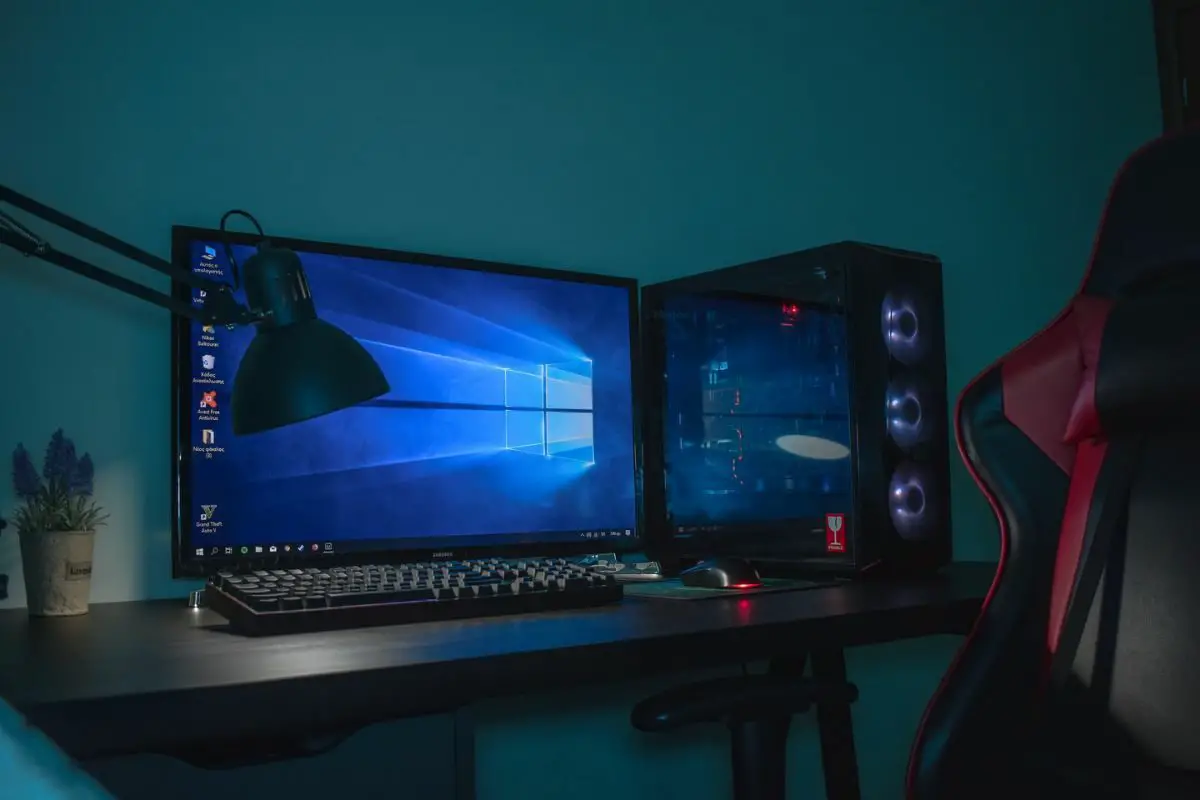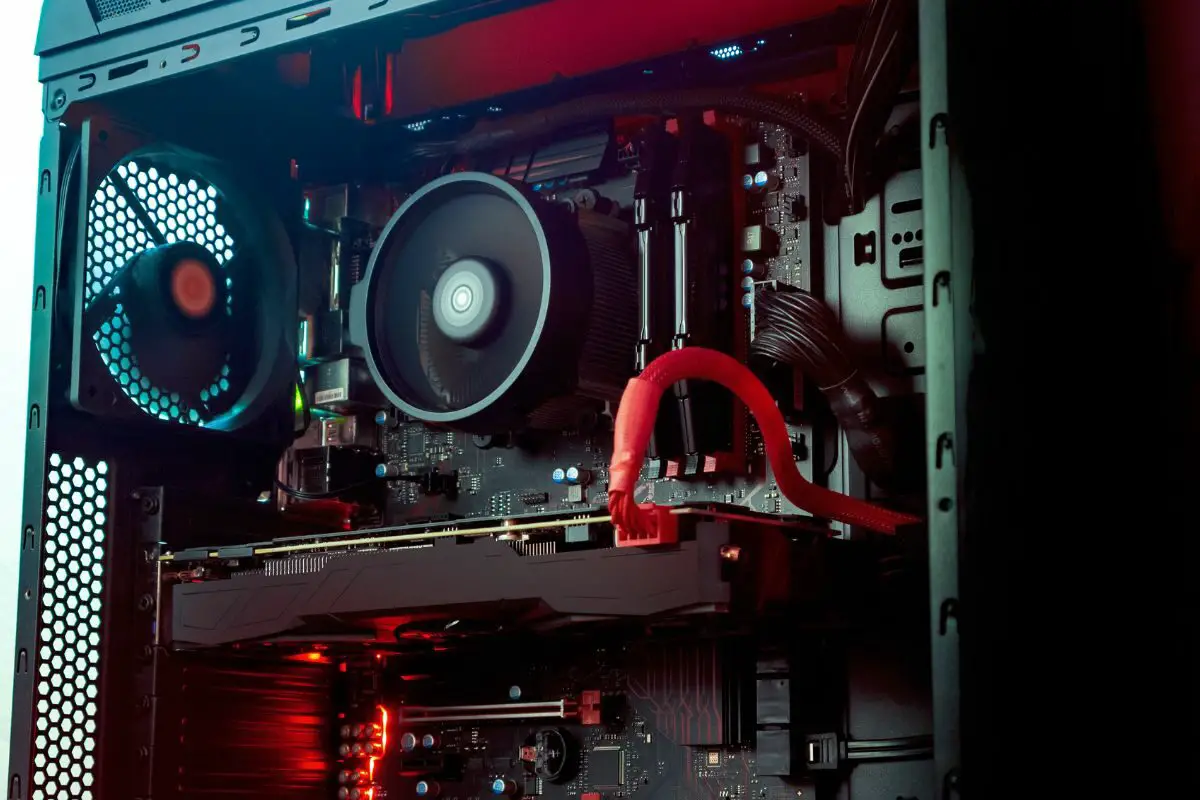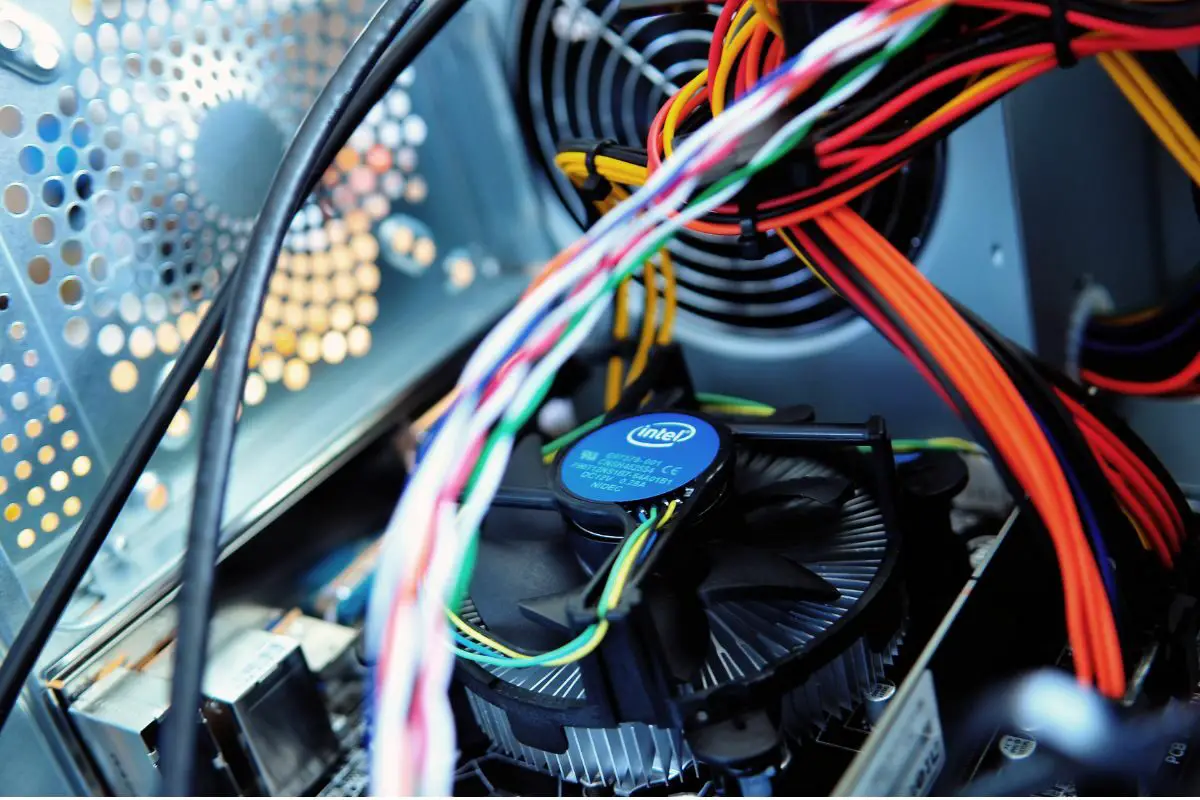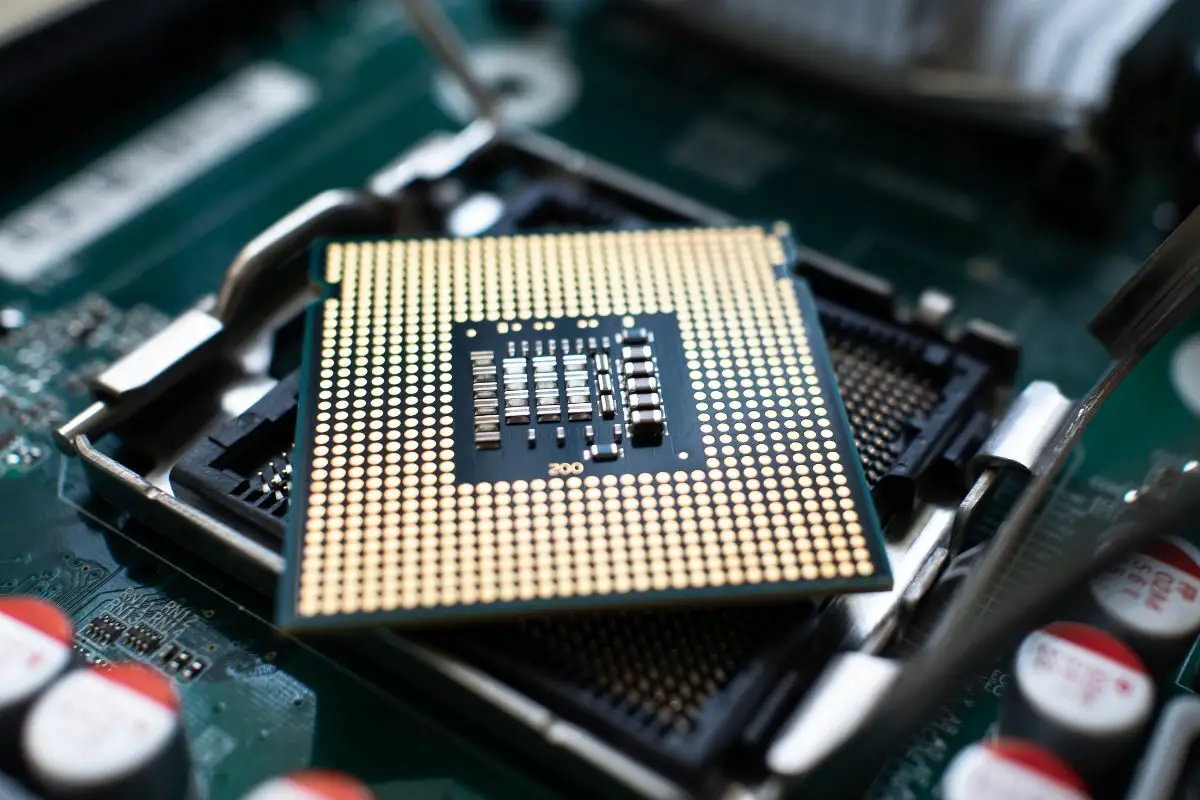
Idle temps are those measured when your computer is simply running with no activity going on. The optimal idle CPU temperature is anywhere under 45 degrees Celsius (113 degrees Fahrenheit). If your processor is running much hotter than this even when you're not doing anything on the computer, there's likely an issue.
I've learned over the years how important it is to monitor your computer's hardware temperatures and have a good idea of what is normal. I once had a problem with my CPU cooler, but since I occasionally monitor my idle CPU temperatures, I was able to fix the problem before it got too bad.
So, if you're wondering what idle CPU temperature is normal for your processor, I'll use this guide to show you. Let's dive right in.
Contents
When your computer is running but there is no workload for it, it is said to be in an "idle" state. This is typically the coolest that a running computer can be at.
You want your idle CPU temperature to be anywhere under 45 degrees Celsius. Of course, the lower, the better.
A processor that isn't doing anything shouldn't really push above this, and if it does, there's likely something at play that is preventing proper cooling.

You can monitor your CPU temps to make sure that your processor is running as it should, but for most people, they'll only find out that they have an overheating CPU when certain warning signs start to show.
After that, if they decide to check the temperature, they'll likely see CPU temperatures above normal.
So, when you have a CPU overheating, what are the symptoms that you can expect your PC to show? Well, here are a few:
It is very rare for your idle CPU temperature to get high enough that you start to see these symptoms. However, if you do, you should definitely take a look inside your computer because there's definitely something very wrong at play.
Now that we've talked about the idle CPU temperature range that you want your computer to operate at, you'll need to actually be able to monitor it.
The good thing is that there are several third-party apps through which you can keep an eye on your CPU temps and make sure that everything is ideal.

HWMonitor is one of the best choices if you're looking for a Windows application to check your hardware sensors with.
This application can be used to monitor your CPU temps, but it can also show you your GPU temperature, your fan speeds, battery voltage, and even clock speeds.
You can download HWMonitor from the official website here.
NZXT is a brand well-known for the performance-oriented computer hardware that they make. They also make NZXT CAM, which can be used for hardware monitoring.
The best part is that NZXT CAM can be used on any Windows computer, regardless of whether you have the company's hardware or not.
This app can do a whole lot, particularly if you have NZXT hardware, but all you will need is the "PC Monitoring" tab.
I particularly like it because the layout is extremely simple and clean, so it makes it easy to see what is going on with your CPU temps at a glance.
If you want a more professional-looking application for your system monitoring, HWINFO will likely meet your needs.
This app is so well-trusted that NASA has used it to monitor some of its systems, which is a glowing endorsement, no matter how you want to look at it.
HWINFO provides plenty of information, including your CPU temps, but it comes in an interface that isn't the most user-friendly.
If you want to check your CPU temps on a Linux system, Open Hardware Monitor is a good option. Plus, it is also available for Windows.
This is open-source software, and even though it hasn't been updated since late 2020, it still gets the job done.
You will be able to see your CPU temp and voltage, GPU temp, fan speeds, and more.
If you use a Mac, there aren't as many options for system monitoring. However, XRG (X Resource Graph) is my favorite among the options out there.
This program can help you monitor your CPU, GPU, RAM, fan speeds, battery, and even your hard disks. It's all-encompassing, really.
You can download XRG from the developer's website.
When your idle temperatures are consistently too high, there's certainly something wrong somewhere.
It can be really helpful to understand the things that can affect your computer's ideal CPU temperatures as this will let you get to the bottom of the situation.

The cooling solution in your PC relies on adequate air flow to keep the temperature of your central processing unit within a normal window.
When there's too much dust in your computer, it can block air vents, gather on the fan blades, and get all over the components. All this dust can directly impact proper airflow inside your computer case.
When idle temperatures start to climb in older computers that haven't been cleaned in ages, dust is very likely to be the biggest culprit.
The good thing is that taking care of dust buildup is very straightforward. All you need to do is clean the computer!
Make sure that you switch off and unplug your system before attempting to clean the inside.
I recommend using a duster or soft cloth to get rid of the bigger clumps of loose dust. Compressed air is the way to go if you want to dislodge more stubborn dust bunnies.
During your cleaning, make sure to target the vents, the air cooler over your CPU, and the region of the motherboard around the processor.
Most consumer PCs, including gaming PCs, use air-cooling systems to keep temperatures low. This means your computer needs to efficiently suck in cold air and push out the hot air.
However, sometimes cooling is inadequate because either of these can't happen as intended. The reason your idle temperatures are so high might simply be that your computer isn't being ventilated well.
Is your PC lodged between other large objects or does it have its vent pressed right up against a wall?
Either way, it might not be able to get the air it needs in an efficient manner, which can result in high CPU temperatures, even when idling.
Taking care of high idle CPU temps that are due to poor ventilation simply requires you to move your computer to a spot where it has more breathing space.
Alternatively, you can clear the objects around the computer for the same effect. It doesn't need an excessive amount of space to breathe.
Idle temperatures can increase when the cooler on top of the CPU isn't pushing an adequate volume of air over the heat sinks.
This can be the case when the cooling systems you're using aren't performing as they should. This could be a stock cooler that's too "basic" for a high-end processor or it could be a cooler that's going bad and not hitting the right RPMs anymore.
What you're going to need to make this better is to start looking at new cooling solutions that will do a better job of keeping your idle CPU temperature down.
For some people, a bigger and better CPU cooler is all that is needed. However, for others, liquid cooling might be where it is at.
Either way, make sure to get the option that's best for you and your build.

Your ambient temperature — how hot or cold the environment around you is — is a big determinant of your idle CPU temperature.
When ambient temperatures are higher, it goes without saying that your idle temperature will be higher as well. It follows that you'll be able to take advantage of a lower idle temperature when you're in a cold climate.
While it is obvious that you can't change the temperature of the outside world, you can certainly provide your PC with a more promising environment.
Keep your system away from walls to allow air to flow around the case. Also keep it away from other computers, game consoles, or electronics that might produce their own heat and radiate onto it.
If possible, have your PC in a room equipped with an air-conditioner. This can help push the idle temperature down by a bit.
When a processor is unlocked for overclocking, it gives you the potential to push its clock speed, and hence, its processing power, beyond the standard.
The reason why everyone isn't doing this though is because the maximum temperature of your CPU will go up. If you have inadequate cooling, your computer is likely to experience a lot of the symptoms of overheating.
Even though the advantage of overclocking is best seen under heavy load, you may see a slight increase in idle temperature when a CPU is pushed beyond its limit.
You have two options if you find out that the idle temperature of your CPU is increasing because of overclocking.
You can choose to disable overclocking and put your CPU back to its default clock speed. If you do this, you'll lose the performance boost that you were going for, but it can help keep you within a more normal temperature window.
Otherwise, you can look for cooling solutions that can better handle the higher temperatures of the CPU. Regular liquid cooling or liquid nitrogen systems can be suitable options when high temperatures are more likely.
The thermal paste on your CPU is extremely important for thermal control.
Thermal paste fills the space between your CPU and the heatsink that sits on top of it. It allows the heat produced by the CPU to be transferred to the heatsink more efficiently.
However, when your thermal paste is poorly applied or is simply too old, it will hinder proper cooling. This will eventually result in your CPU core temp climbing.
New thermal paste application is the key to getting your CPU to exchange heat with the CPU cooler properly.
The good thing is that applying thermal paste isn't hard. You'll just need to make sure you have the new thermal paste you want to apply, isopropyl alcohol, and a clean microfiber cloth.
Arctic MX-4 thermal paste is a good choice if you're not sure which kind of thermal paste you should go for.

Once you've got all of those ready, follow these steps to apply your thermal paste:
The ideal temperature range for your PC’s CPU, when it is idle, would be below 45 degrees Celsius. If an idle CPU is running hotter than this, there's very likely to be something causing it to produce more heat or cool worse than it should.
Things that can affect your idle temperature include dust accumulation, poor case airflow, overclocking, old thermal paste, and high ambient temperatures.
Was this article able to teach you about the ideal temperature range for an idle CPU? If so, take a look at our related articles to learn more cool things.
